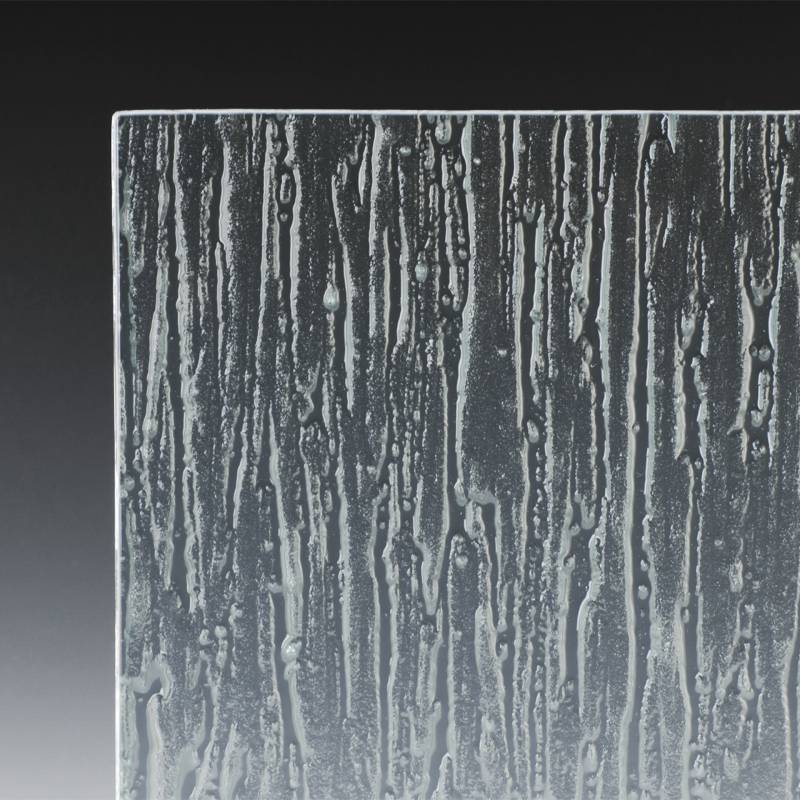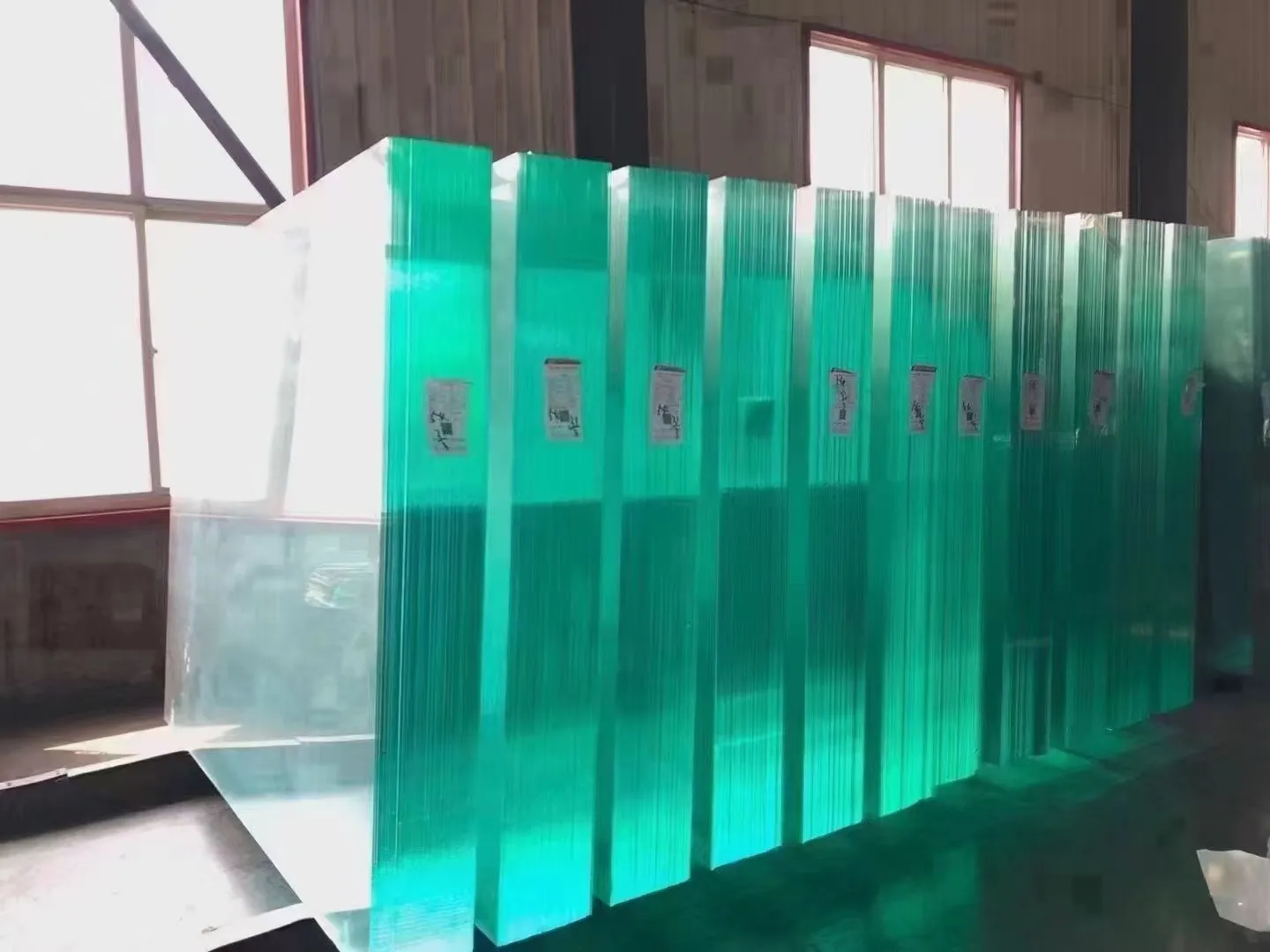Float glass, a staple in the world of manufacturing and architecture, is a type of glass that is made by floating molten glass on a bed of molten metal, typically tin. This process results in a very smooth and flat surface, making it incredibly versatile and highly valued for a variety of applications around the globe.

The creation of float glass revolutionized the glass industry. Its origins trace back to Sir Alastair Pilkington in the mid-20th century, whose innovative approach replaced older methods that were less efficient and resulted in lower quality products. The float glass process involves mixing sand, soda ash, and limestone, melting these raw materials at high temperatures, and then allowing the molten glass to float over a bed of molten tin. This procedure ensures uniform thickness and a flawless surface, essential qualities for both aesthetic and practical applications.
One of the key advantages of float glass lies in its myriad of applications. In architecture, it serves as the foundational element for windows, facades, and glass doors. Its clarity and smoothness enhance natural light in a building, promoting energy efficiency and providing an expansive view of the outside world. Additionally, it can be easily customized through cutting, laminating, and coloring, allowing architects and designers to experiment with different styles and functionalities.

In the automotive industry, float glass’s strength and flexibility make it indispensable. Its ability to withstand extreme conditions and its safety properties, particularly when laminated, render it the perfect material for windshields and rear windows. The glass's ability to be tempered further enhances its durability, making it shatter-resistant and safer for passengers in the event of an accident.
float glass meaning
Moreover, float glass is also pivotal in the production of mirrors and extra-clear glass products. By applying reflective coatings, manufacturers can transform flat float glass into mirrors. Its inherent smoothness and distortion-free properties ensure high-quality reflections, which are essential in both residential and commercial settings. Extra-clear float glass, produced by reducing the iron content, offers an enhanced level of transparency and purity, making it ideal for display cases and premium furniture.
From a sustainability perspective, the float glass process is continuously evolving to reduce its environmental impact. Modern advancements have focused on minimizing energy consumption and utilizing recycled materials, thereby contributing to a circular economy. Improved furnace designs and the adoption of cleaner energy sources are steps taken by the industry to meet global sustainability goals.
For consumers and businesses, understanding the significance of float glass can influence purchasing decisions and project outcomes. Opting for float glass not only ensures superior quality and performance but also supports responsible production practices that are increasingly important in today's market.
In conclusion, float glass represents a remarkable blend of innovation, versatility, and sustainability. Its profound impact across various sectors demonstrates its integral role in modern manufacturing and design. With ongoing improvements in production techniques and a commitment to environmental responsibility, float glass remains a cornerstone of both present and future advancements in the glass industry.
 Afrikaans
Afrikaans  Albanian
Albanian  Amharic
Amharic  Arabic
Arabic  Armenian
Armenian  Azerbaijani
Azerbaijani  Basque
Basque  Belarusian
Belarusian  Bengali
Bengali  Bosnian
Bosnian  Bulgarian
Bulgarian  Catalan
Catalan  Cebuano
Cebuano  Corsican
Corsican  Croatian
Croatian  Czech
Czech  Danish
Danish  Dutch
Dutch  English
English  Esperanto
Esperanto  Estonian
Estonian  Finnish
Finnish  French
French  Frisian
Frisian  Galician
Galician  Georgian
Georgian  German
German  Greek
Greek  Gujarati
Gujarati  Haitian Creole
Haitian Creole  hausa
hausa  hawaiian
hawaiian  Hebrew
Hebrew  Hindi
Hindi  Miao
Miao  Hungarian
Hungarian  Icelandic
Icelandic  igbo
igbo  Indonesian
Indonesian  irish
irish  Italian
Italian  Japanese
Japanese  Javanese
Javanese  Kannada
Kannada  kazakh
kazakh  Khmer
Khmer  Rwandese
Rwandese  Korean
Korean  Kurdish
Kurdish  Kyrgyz
Kyrgyz  Lao
Lao  Latin
Latin  Latvian
Latvian  Lithuanian
Lithuanian  Luxembourgish
Luxembourgish  Macedonian
Macedonian  Malgashi
Malgashi  Malay
Malay  Malayalam
Malayalam  Maltese
Maltese  Maori
Maori  Marathi
Marathi  Mongolian
Mongolian  Myanmar
Myanmar  Nepali
Nepali  Norwegian
Norwegian  Norwegian
Norwegian  Occitan
Occitan  Pashto
Pashto  Persian
Persian  Polish
Polish  Portuguese
Portuguese  Punjabi
Punjabi  Romanian
Romanian  Russian
Russian  Samoan
Samoan  Scottish Gaelic
Scottish Gaelic  Serbian
Serbian  Sesotho
Sesotho  Shona
Shona  Sindhi
Sindhi  Sinhala
Sinhala  Slovak
Slovak  Slovenian
Slovenian  Somali
Somali  Spanish
Spanish  Sundanese
Sundanese  Swahili
Swahili  Swedish
Swedish  Tagalog
Tagalog  Tajik
Tajik  Tamil
Tamil  Tatar
Tatar  Telugu
Telugu  Thai
Thai  Turkish
Turkish  Turkmen
Turkmen  Ukrainian
Ukrainian  Urdu
Urdu  Uighur
Uighur  Uzbek
Uzbek  Vietnamese
Vietnamese  Welsh
Welsh  Bantu
Bantu  Yiddish
Yiddish  Yoruba
Yoruba  Zulu
Zulu 


